Learn about the Atomic Bomb's Effects on the Surrounding Community with Hiroshima Archive
Hidenori Watanave, Ph.D.,
Associate Professor at Tokyo Metropolitan University,
@hwtnv
It has been 70 years since the atomic bombs fell upon Hiroshima and Nagasaki. Few survivors remain today and soon there will be none. Who then can speak from personal experiences of the effects of nuclear war upon humanity?
Combining material from many sources, the Hiroshima Archive provides a comprehensive telling of the bombing of Hiroshima and the aftermath that followed. The goal of the Hiroshima Archive is to ensure that future generations will be able to learn the true cost of atomic warfare.
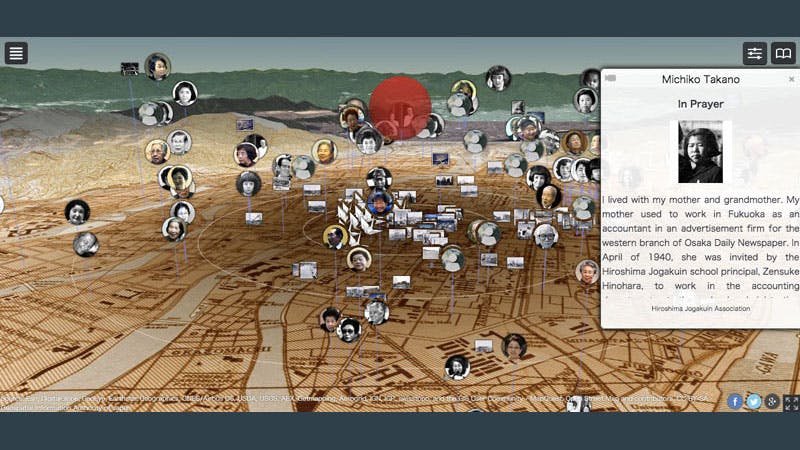
Technology
Using Cesium, the archive is able to provide a personalized experience. A user could be viewing a 1945 map while browsing survivors’ accounts and photos. They could then choose to switch to modern aerial photography to see how the location has changed since.
The archive also provides new ways to view existing historical data. Some examples of the new analysis we were able to perform include:
- Distribution of victims at the moment of impact
- Georeferencing of photos taken of the site
- Geographical relation between the impact and how the area evolved around it.
Migration from Google Earth API
The first version of the Hiroshima Archive was built using the Google Earth API. It launched in 2011 and over the next 4 years had approximately 300,000 visits from people around the world. A year ago, Google announced they are deprecating Google Earth API at the end of 2015. We did not want to be stuck using an unsupported API, so we decided to migrate our archives to Cesium instead.
No one on our team had prior experience with Cesium before this undertaking, making the migration process as much of an exploration of the new feature possibilities as a direct feature-to-feature port. This lead to some difficulties as we converted our KML to CZML, but we worked through that process and are very happy with the results.
One of the noteworthy features that excited us was our ability to now include a large collection of open maps and terrain data. Using Ko-hei Otsuka’s Cesium libraries, we were able to create and convert historic aerial photography and maps into filterable imagery layers. We also integrated the DEM files maintained by the Geospatial Information Authority of Japan into terrain layers for use in the archive.
What’s next
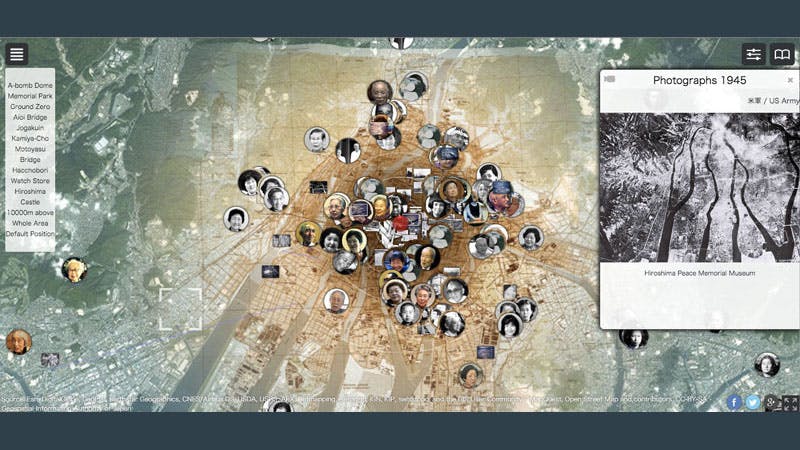
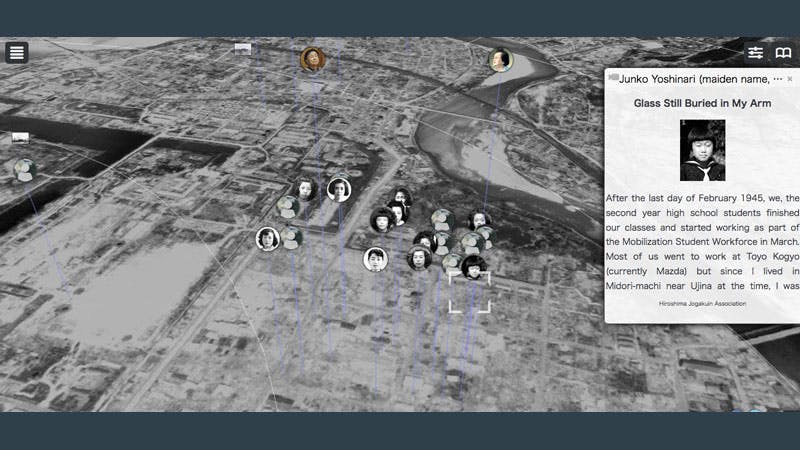
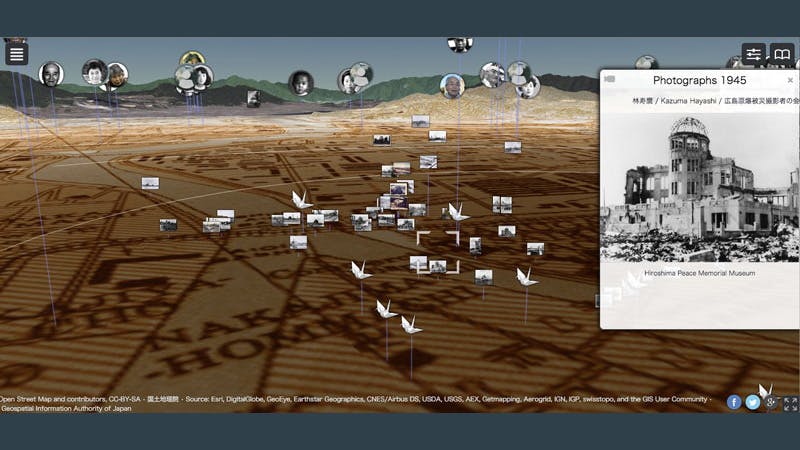
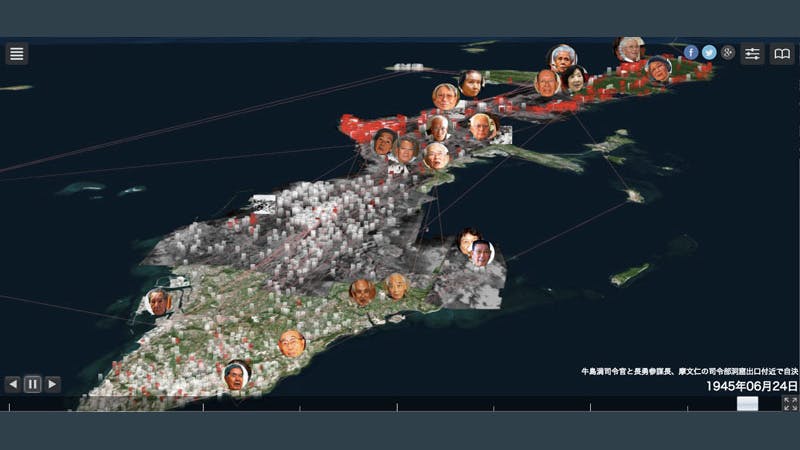
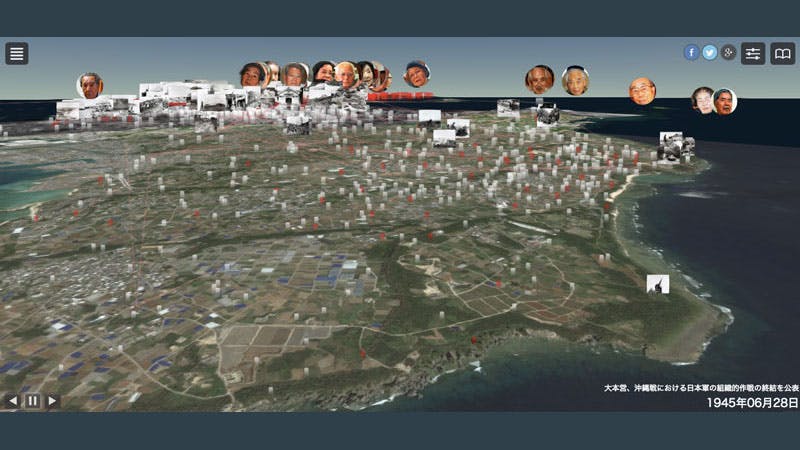
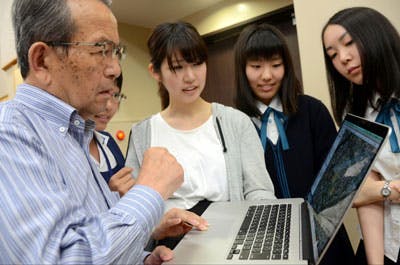
Work on the Hiroshima Archive has not stopped. We have an active community of volunteers that are constantly contributing their time to improve the accuracy of the existing data, process new material for inclusion, provide English translations, and even timestamping existing data so we can eventually provide a full timeline enabled experience. In this sense, Hiroshima Archive is an open-source project, like Cesium, and we greatly appreciate that.
Going forward, we plan to migrate our entire catalog of archives to Cesium. We are confident that the experience we gained from migrating the Hiroshima Archive will allow us to excel in those endeavors.
We are also planning to extend all of our archives to include relocation data of the victims with time indexes. We will then be able to visualize the specific locations of survivors at the time of a disaster and their movements afterwards. We’re excited to be able to generate these migratory patterns which could assist in disaster planning for communities. Our latest archive, The Battle of Okinawa in WWII (not yet translated to English) relies heavily on this feature and we feel it provides a compelling and emotional experience as the civilians flee battlegrounds.
Our ultimate goal is to construct what we are calling the “META Digital Archive.” It will include data from all the wars and natural disasters for which we can get material. We want to visualize the geopolitical nature of wars and the effects of natural disasters upon humanity. Our hope is that a cost-effective method to process the innumerable amounts of data required to build an archive with such a large scope will be attainable in the near future.